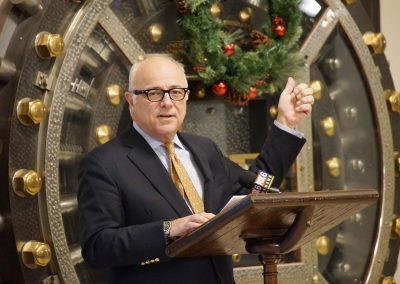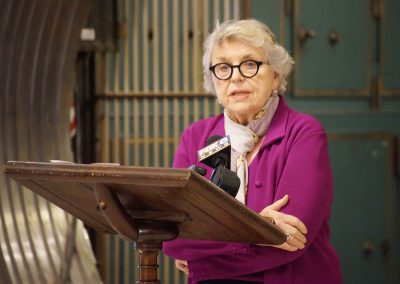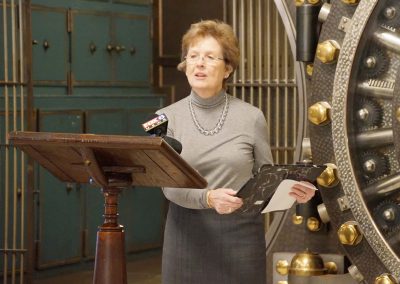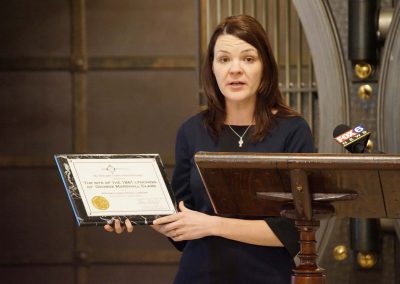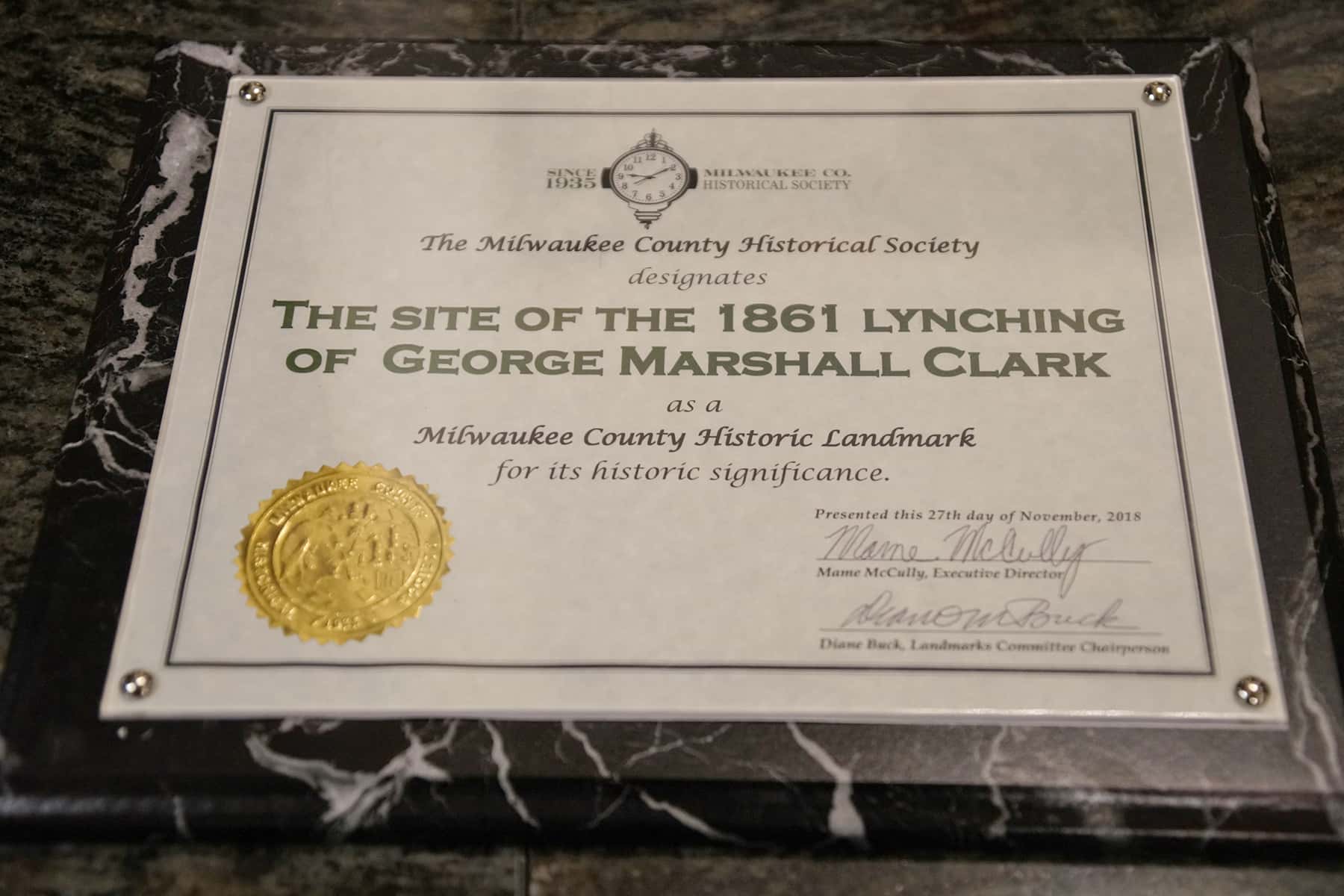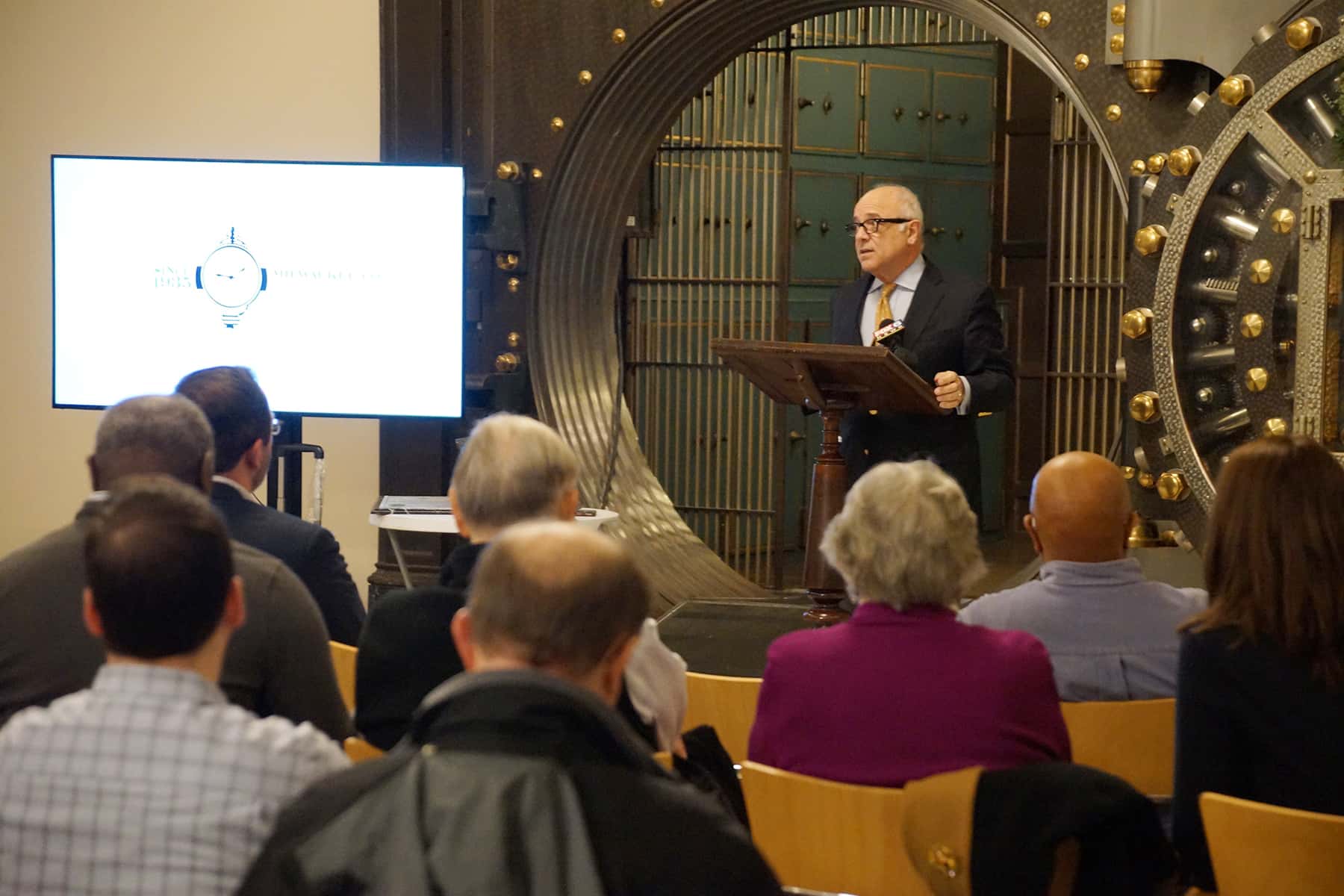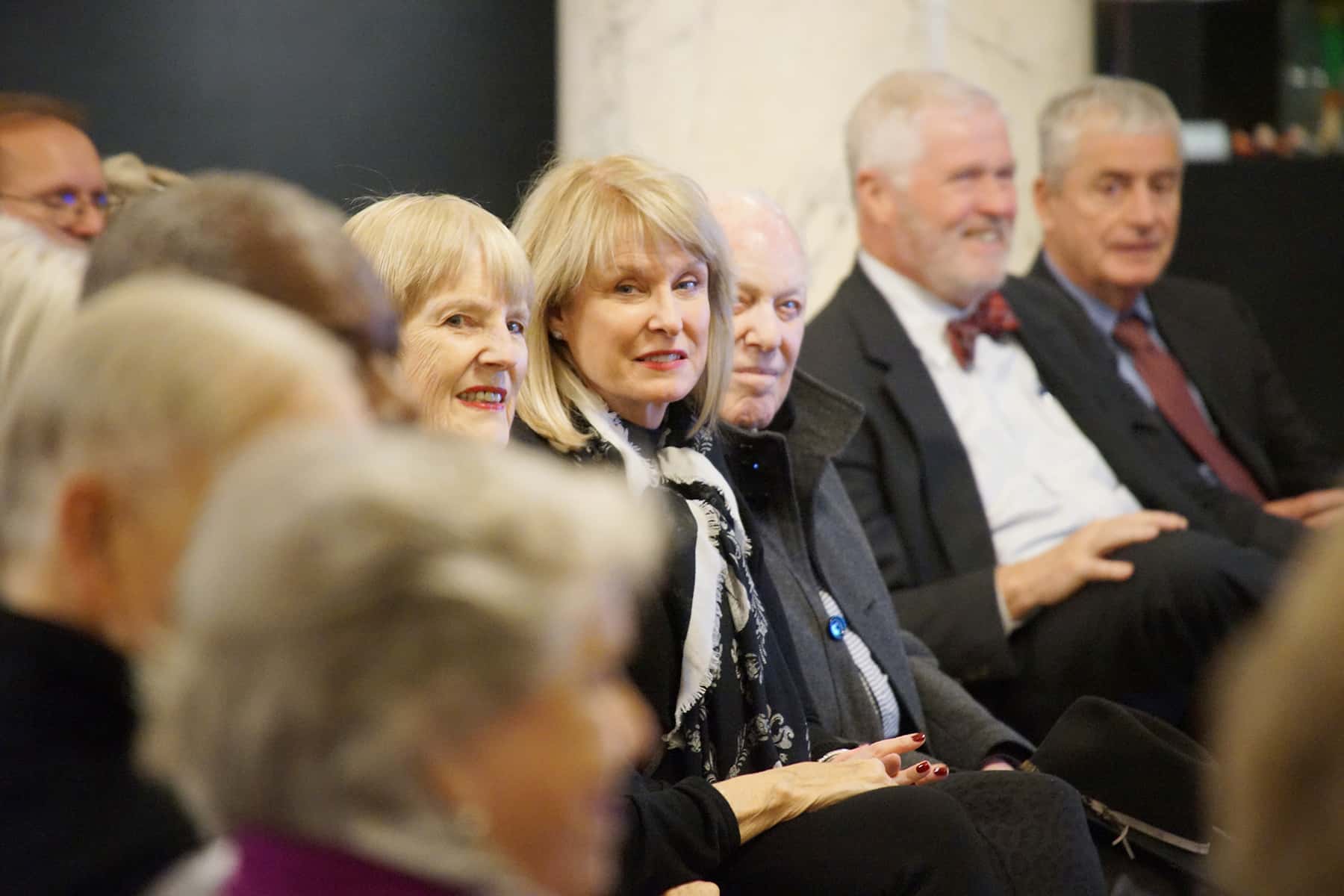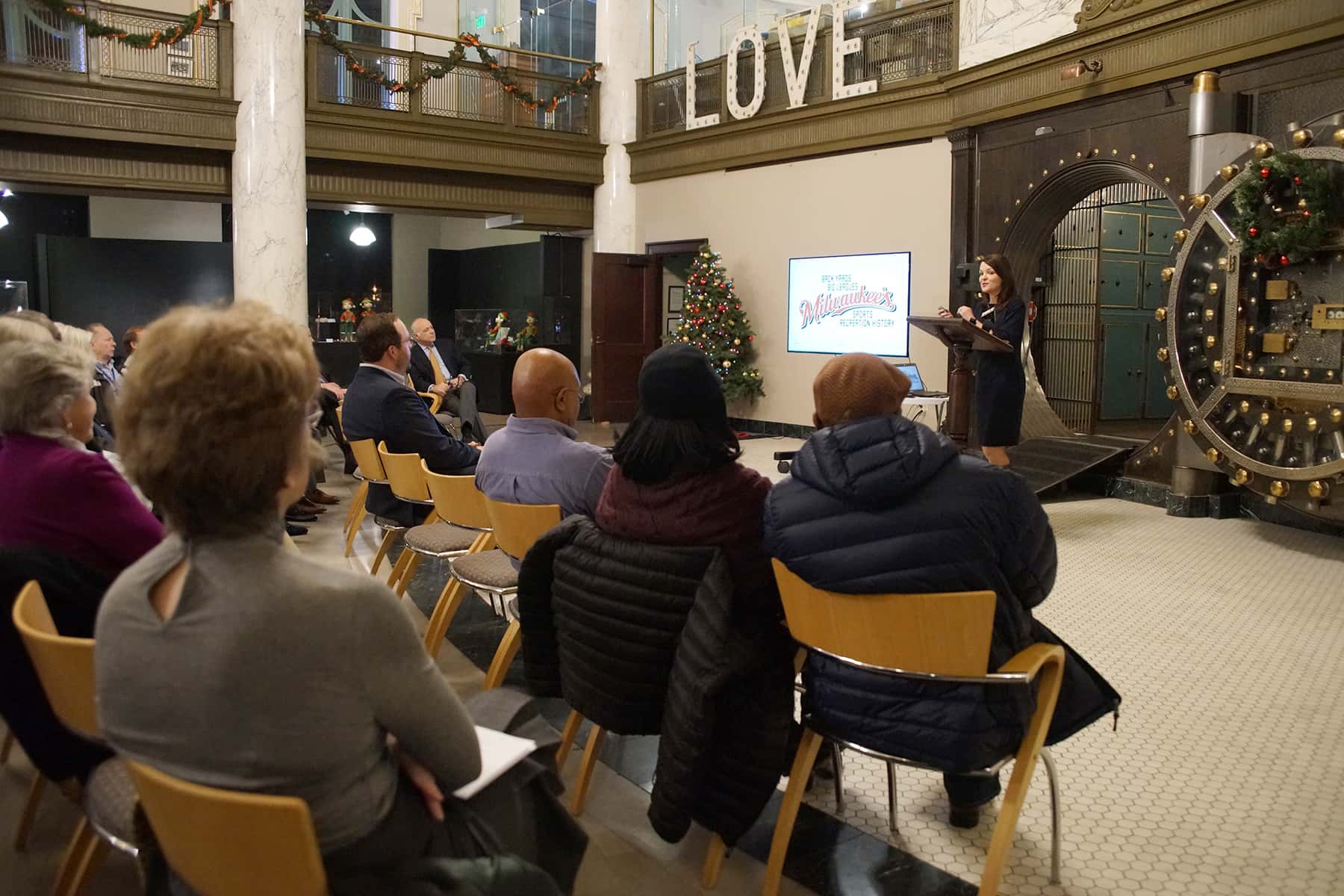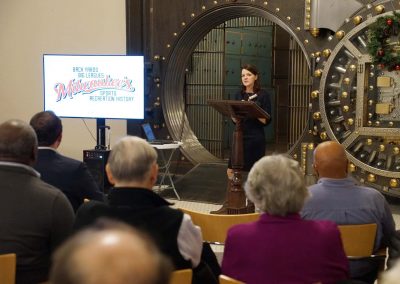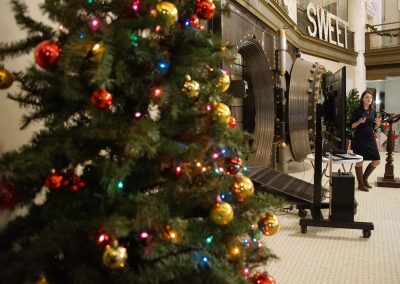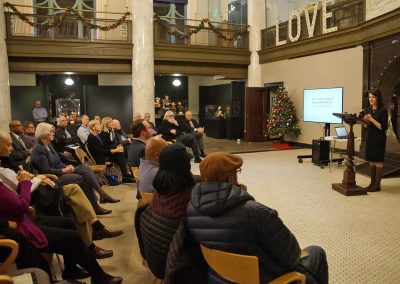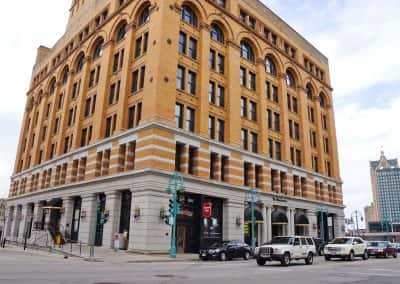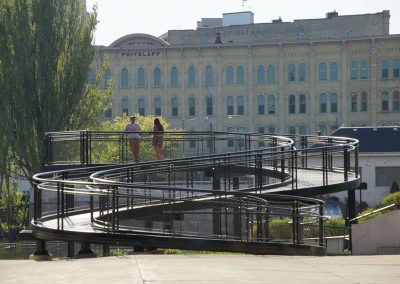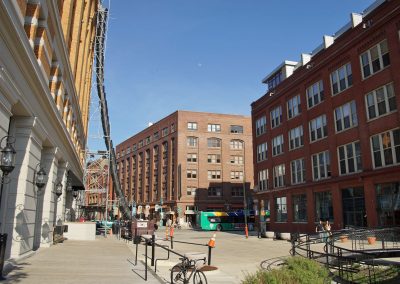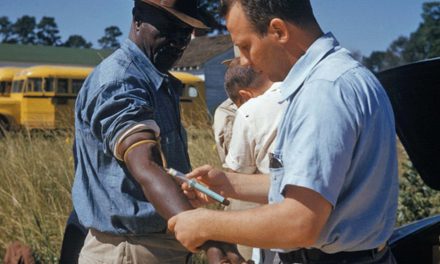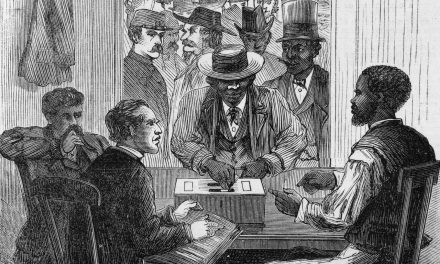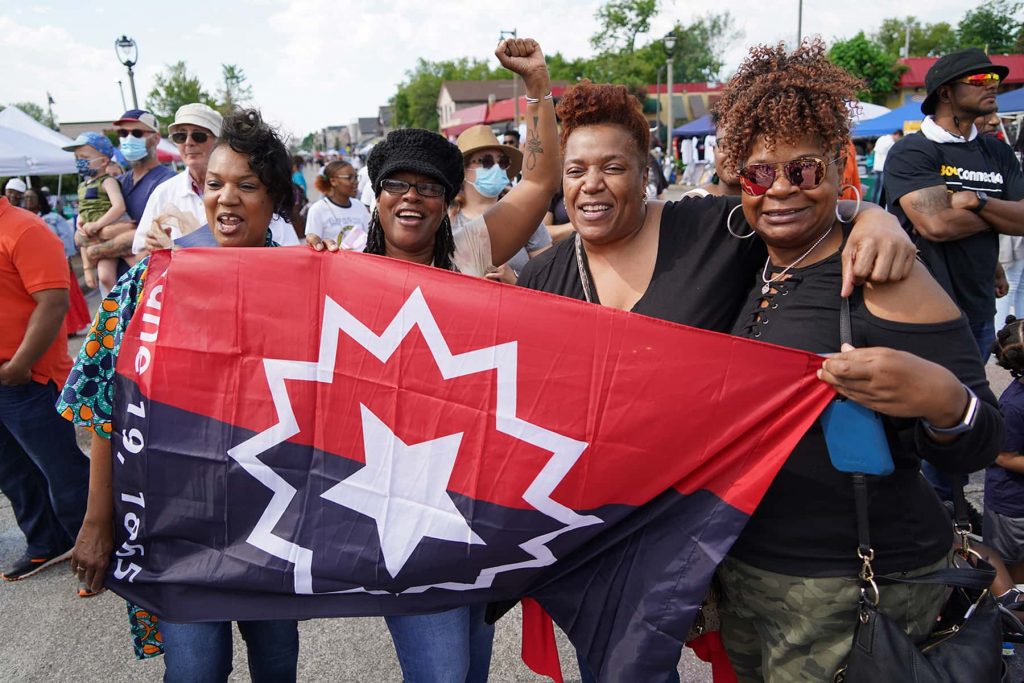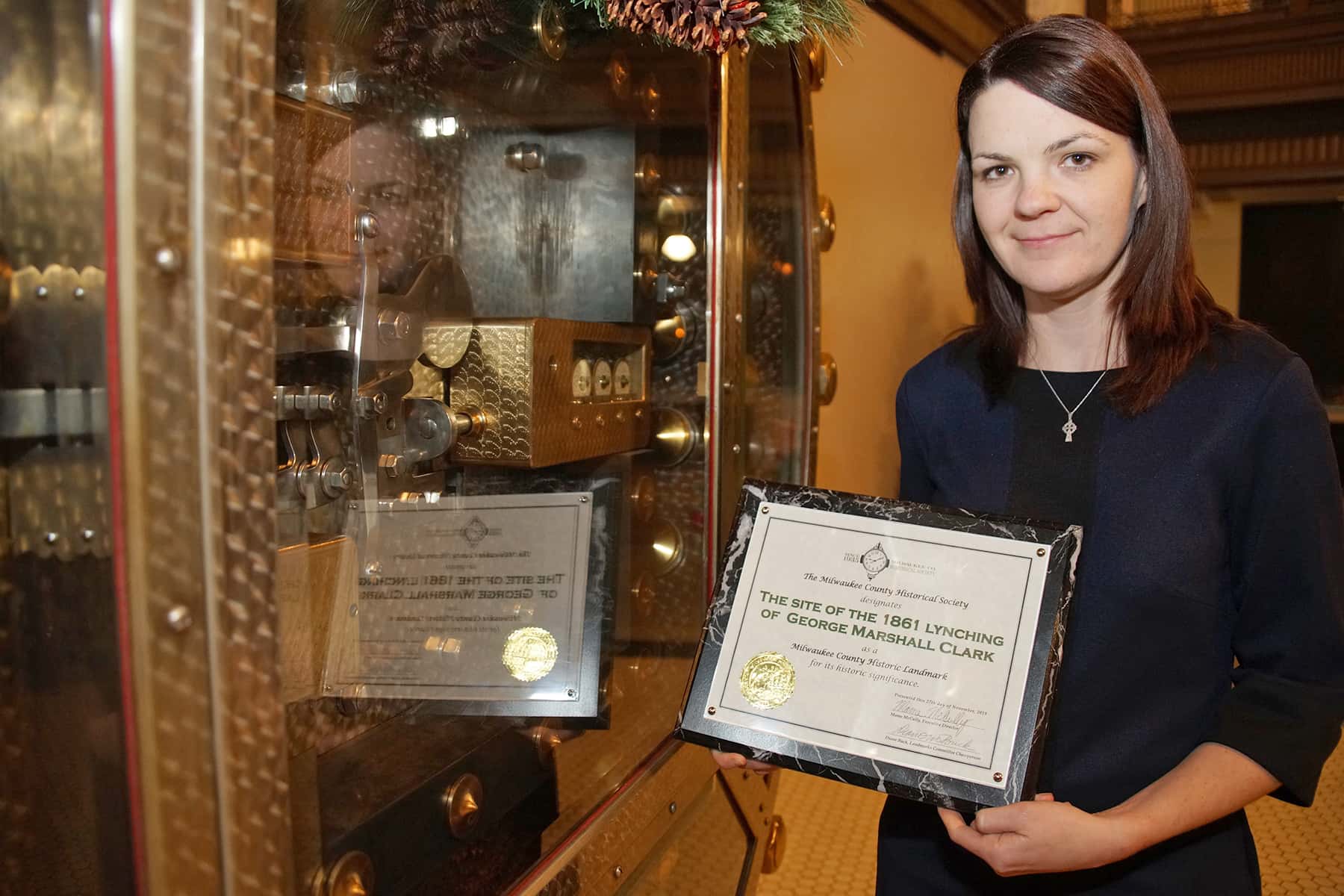
The Milwaukee County Historical Society (MCHS) officially added two new Milwaukee County landmarks during its November 27 annual meeting, including the lynching site of George Marshall Clark.
The Historical Society is the only organization empowered to designate landmarks for Milwaukee County. The public was invited to nominate new properties to be considered for 2018, with a May deadline. That was followed by a review board inspection and evaluation of the proposed sites, with a public hearing for the candidate sites in August. As a result of the deliberations, the two 2018 landmarks will be:
- Woman’s Club of Wisconsin, 813 E. Kilbourn Avenue, for its historic and architectural significance.
- The site where George Marshall Clark was lynched in 1861, northwest corner of Buffalo and Water Streets, for its historic significance.
“The Milwaukee County Landmarks program allows us to publicly recognize places in Milwaukee that are a part of our culture and history and that are still important to our community today,” said Mame Croze McCully, Executive Director of MCHS. “We are pleased to add to new landmarks in 2018 as it allows us to properly recognize, remember, and share the stories of our past.”
On a Friday evening, September 6, 1861, Clark, 22 years old, was walking through the Third Ward with James Shelton, also African-American. They encountered two men of Irish descent, Darby Carney and John Brady. An argument ensued and escalated into a fight, in course of which Carney suffered a stab wound to his abdomen and Brady received a severe slash on his shoulder. Clark and Shelton fled, stabbing a bystander in the process but were soon captured and placed in jail, then located at the northern end of today’s Cathedral Square. Confined in a large room at the rear of the jail, Clark and Shelton heard the mob approaching. Shelton was able to hide as the crowd burst in, but Clark was spotted, dragged from the jail, and beaten until, as one history puts it, he was “more dead than alive.” He was taken to a fire station on East St. Paul Avenue and given a one-sided semblance of a trial. Clark was then dragged through the Third Ward and hanged from a rope tied to a pile driver. – Carl Swanson
The editorial staff of the Milwaukee Independent nominated the site where Clark was lynched in 1861 for designation as a historically significant landmark. Published articles on the event were considered during the review process.
- THE LYNCHING OF GEORGE MARSHALL CLARK IN MILWAUKEE
- MILWAUKEE NOTEBOOK: AN 1861 LYNCHING IN THE THIRD WARD
While the 1854 capture of fugitive slave Joshua Glover and his escape from Milwaukee’s courthouse, assisted by members of the local community, is well documented and acknowledged with historical markers, the only lynching to take place in the city is mostly unknown. Of the sixteen documented lynchings that took place in Wisconsin, Clark’s lynching was the only such occurrence in Milwaukee’s history.
Having reported on America’s Black Holocaust Museum in Bronzeville and the George Marshall Clark incident, the editorial board of the Milwaukee Independent felt that for the city to come to terms with its segregated condition, it was important to acknowledge uncomfortable historical truths. – Editorial Staff, Milwaukee Independent
Clark’s death had a chilling effect on Milwaukee’s black community, and out of fear of the mob, many decided to leave. Public awareness of the incident is a step along the path of healing social trauma that continues to haunt residents of the Metropolitan area.
MCHS has started the process to have a historical marker erected on the corner of Buffalo and Water Streets, that designates the spot as the site of the 1862 lynching of George Marshall Clark. The landmark, in the meantime, will be immediately added to the Milwaukee County Landmarks website.
The next step in the process will be to begin designing the marker. By the summer of 2019, MCHS hopes to have it installed on the corner. MCHS has also been in touch with the National Memorial for Peace and Justice Monument Placement Initiative Team. They are not yet ready to take new registrations, but expect to begin that process in 2019.
“The Society relies on the public to nominate Landmarks for designation each year. This allows us to consider landmarks from all over the County and to also know what stands out people as important to their community and it’s story,” added McCully.

